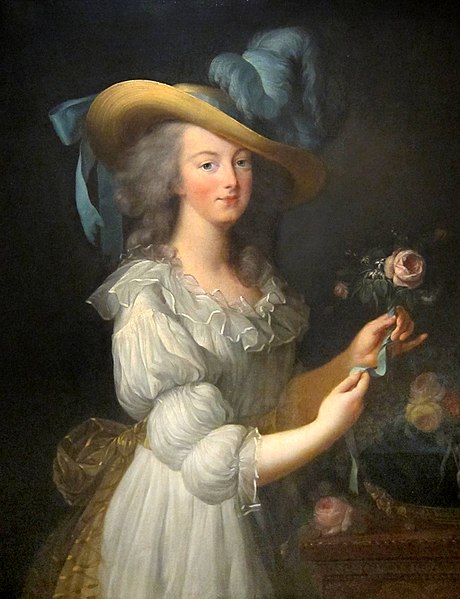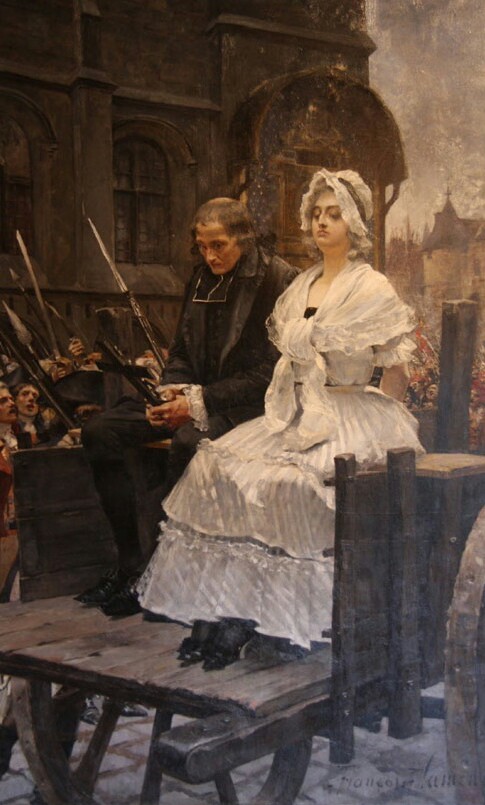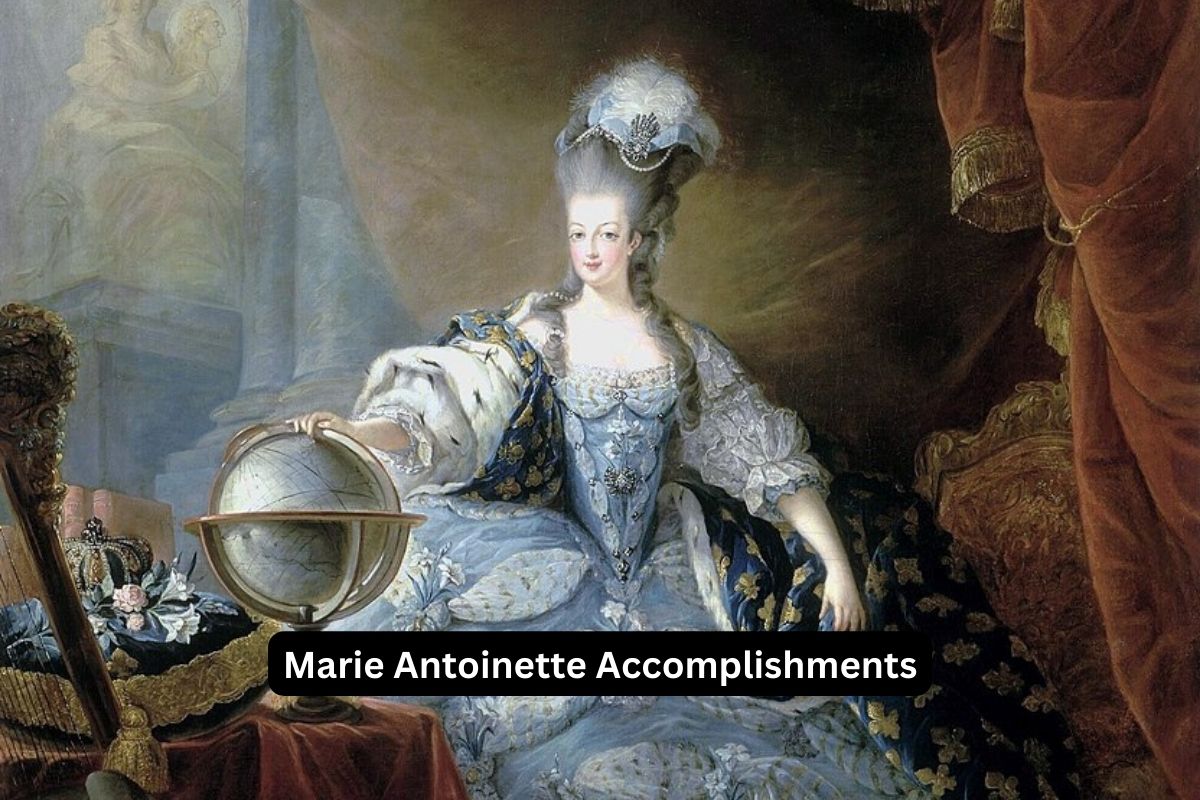Marie Antoinette, the last Queen of France before the French Revolution, is remembered for her accomplishments amidst a backdrop of historical turmoil.
Married at 15 to Louis XVI, she balanced her diplomatic role with a love for arts and fashion, shaping cultural trends.
Seeking refuge from court formality, she transformed the Petit Trianon into a personal haven and even created a rustic farm escape. Though not directly involved in politics, she influenced foreign policy discussions.
As a mother of four, she contributed to the royal lineage, and her charitable efforts showed compassion. When the French Revolution erupted, she faced adversity with resilience, standing beside her husband. Tragically, this journey culminated in imprisonment, trial, and her dignified execution by guillotine in 1793.
Marie Antoinette’s life paints a complex portrait of accomplishments and challenges within a tumultuous era, leaving an indelible mark on history.
Accomplishments of Marie Antoinette
1. Became Queen of France through marriage to Louis XVI
Born an Archduchess of Austria, Marie Antoinette’s marriage to Louis XVI of France was a significant diplomatic alliance.
Also Read: Facts About Marie Antoinette
At the age of 15, she married the future King of France in 1770 as part of efforts to strengthen the relationship between Austria and France. This marriage was intended to solidify the peace between the two countries after years of conflict.
Her transition from Austrian nobility to the French court was marked by elaborate ceremonies and celebrations.

2. Supported arts, literature, and music as a cultural patron
Marie Antoinette had an interest in arts and culture, and she used her position to support various artistic endeavors.
Also Read: Timeline of Marie Antoinette
She patronized painters, sculptors, and musicians, contributing to the flourishing of the arts during her time as queen. She played a role in shaping the artistic tastes of the French court, often favoring more delicate and refined styles.
Her support for the arts was also influenced by her desire to enhance her image and that of the monarchy.
3. Redecorated the Petit Trianon, a small palace at Versailles
The Petit Trianon was a small château located on the grounds of the Palace of Versailles. Marie Antoinette took a keen interest in its renovation and redecoration.
She transformed the interior and gardens to create a more intimate and relaxed atmosphere compared to the formalities of the main palace.
The renovations reflected her taste for neoclassical aesthetics and a desire for a more private space away from the rigid protocols of court life. Her involvement in the Petit Trianon showcased her personal style and preferences.
4. Created a model farm, “Hameau de la Reine,” to experience rural life
Marie Antoinette had a fascination with rural life and a desire to escape the formalities of the royal court. As a result, she oversaw the creation of the “Hameau de la Reine” (The Queen’s Hamlet) at the Palace of Versailles.
This was a picturesque model farm designed to resemble a rustic village, complete with cottages, gardens, and farm animals. Marie Antoinette and her close friends would dress as shepherdesses and engage in simple rural activities, offering a contrast to the opulence of the palace.
5. Engaged in charitable activities, including supporting hospitals
While her reputation often emphasizes her lavish lifestyle, Marie Antoinette did participate in philanthropic endeavors. She supported charitable institutions, including hospitals and homes for the needy.
However, her charitable efforts were often overshadowed by the criticisms of her extravagant spending and perceived indifference to the struggles of the French population.
6. Exerted political influence over King Louis XVI, especially in foreign policy
While Marie Antoinette didn’t hold any official political position, she did influence certain decisions made by her husband, King Louis XVI.
She maintained a correspondence with her family in Austria and provided insights into international affairs, particularly regarding alliances and foreign policy matters.
Her influence in these matters was often controversial and subject to criticism from those who suspected she was working in the interests of Austria, her home country.

7. Gave birth to four children, contributing to the royal line
Marie Antoinette’s role as a mother was of great significance in the context of royal lineage. She gave birth to four children:
- Marie Thérèse Charlotte
- Louis Joseph Xavier François
- Louis-Charles
- Sophie Hélène Béatrice
The birth of an heir and subsequent heirs was crucial for the stability of the monarchy, ensuring a continuation of the royal line.
8. Secretly aided the American Revolution with funds and supplies
Marie Antoinette discreetly supported the American Revolution by sending funds and supplies to the American colonists who were fighting for independence from Britain.
This support was driven by a desire to weaken Britain, France’s historical rival, and to potentially gain political leverage for France in international negotiations.
9. Displayed resilience during the French Revolution’s challenges
The French Revolution brought immense challenges to the monarchy and the royal family. Marie Antoinette faced increasing public scrutiny, criticism, and political unrest.
Despite the mounting pressures, she demonstrated a degree of resilience and strength in the face of adversity, often standing by her husband’s side during tumultuous times.
10. Faced her execution with dignity and courage
Marie Antoinette’s life took a tragic turn during the revolution. The monarchy was abolished, and she and her family were imprisoned. In 1793, she was put on trial and subsequently executed by guillotine.
Despite her grim circumstances, historical accounts suggest that Marie Antoinette faced her execution with dignity and courage, accepting her fate with a sense of composure.
